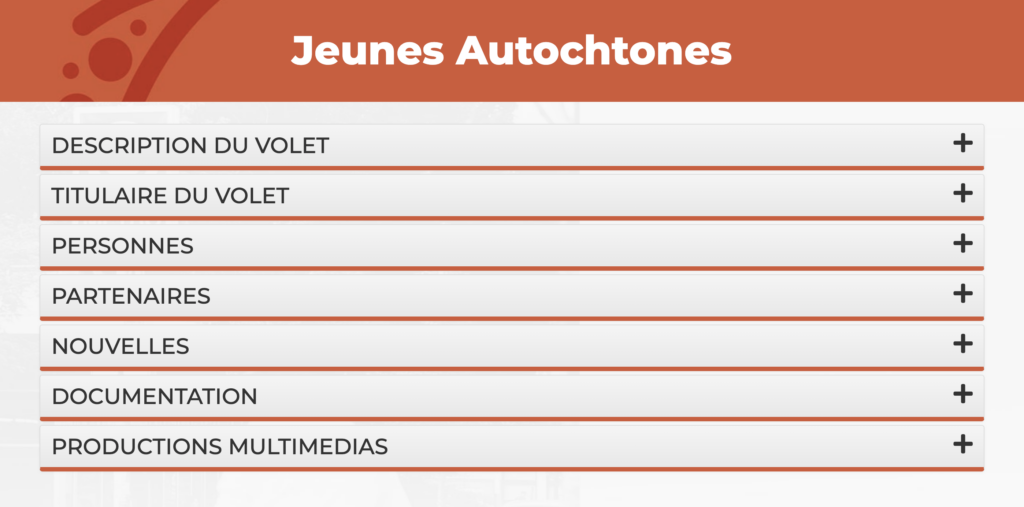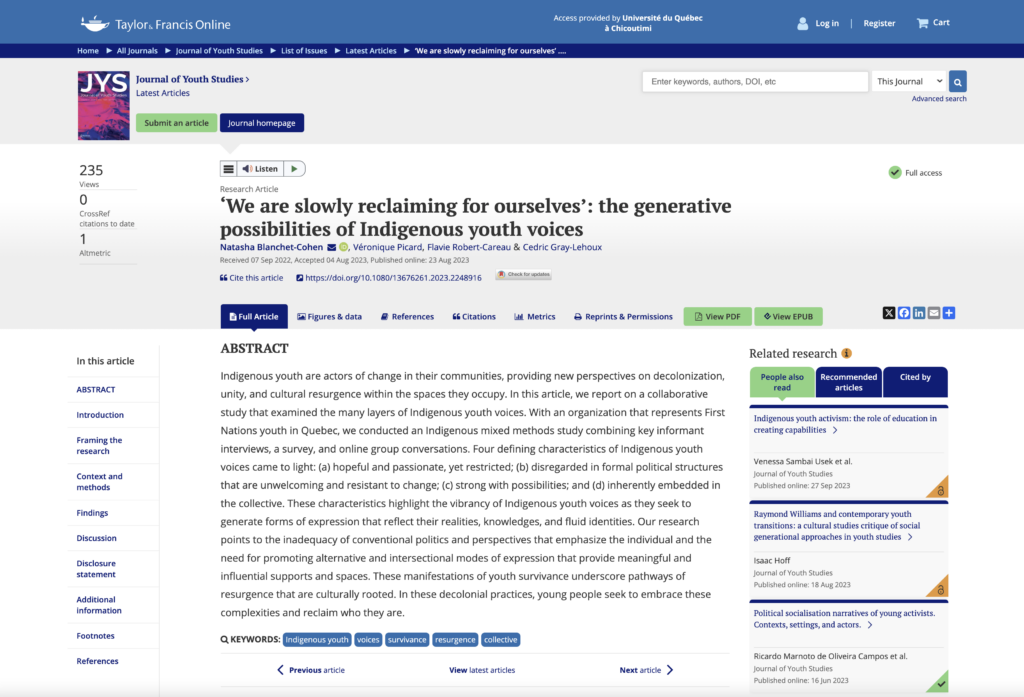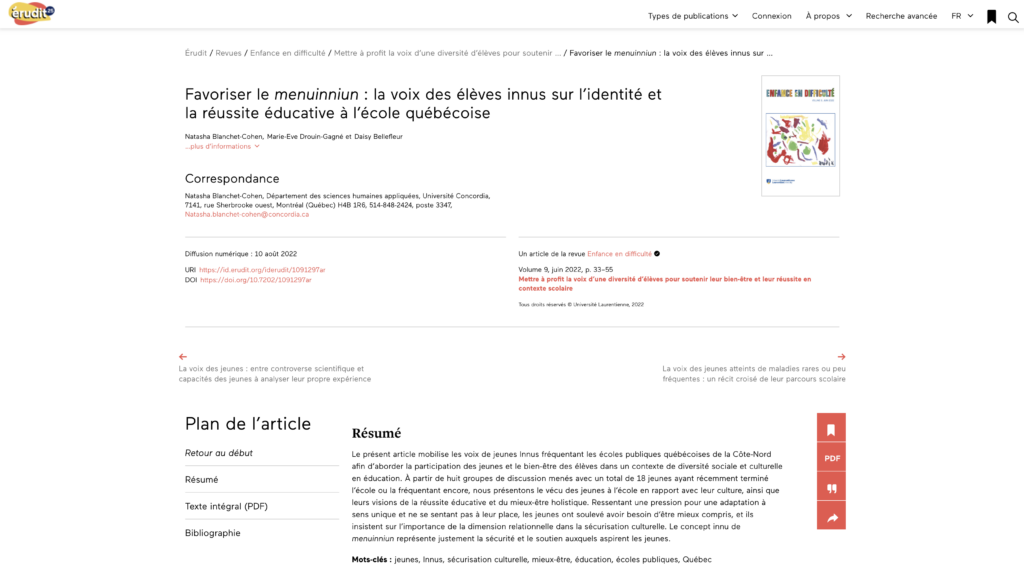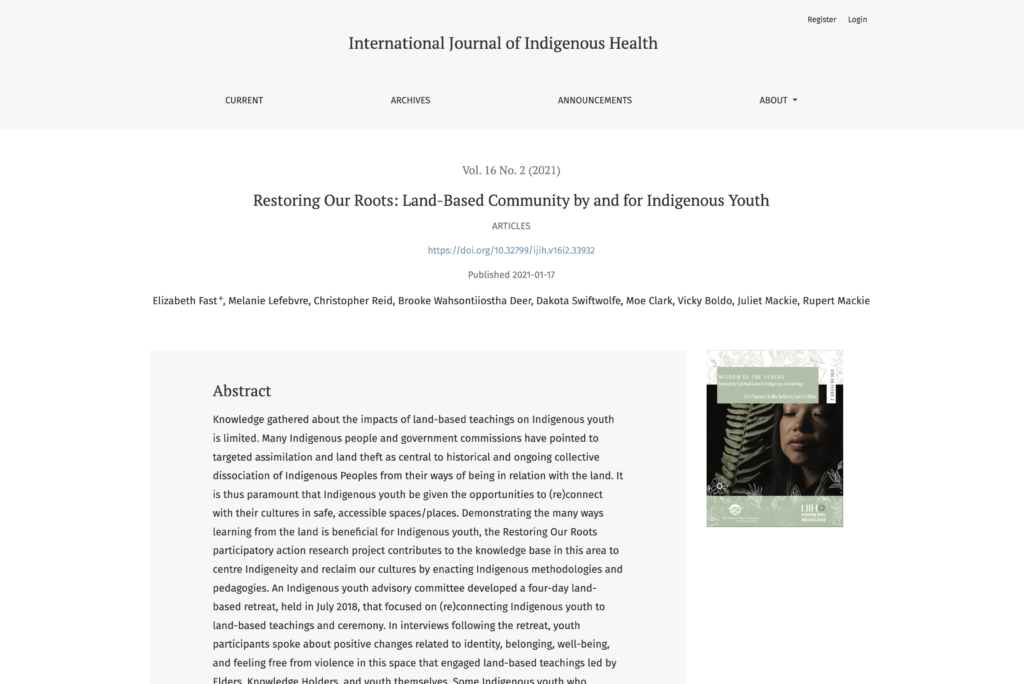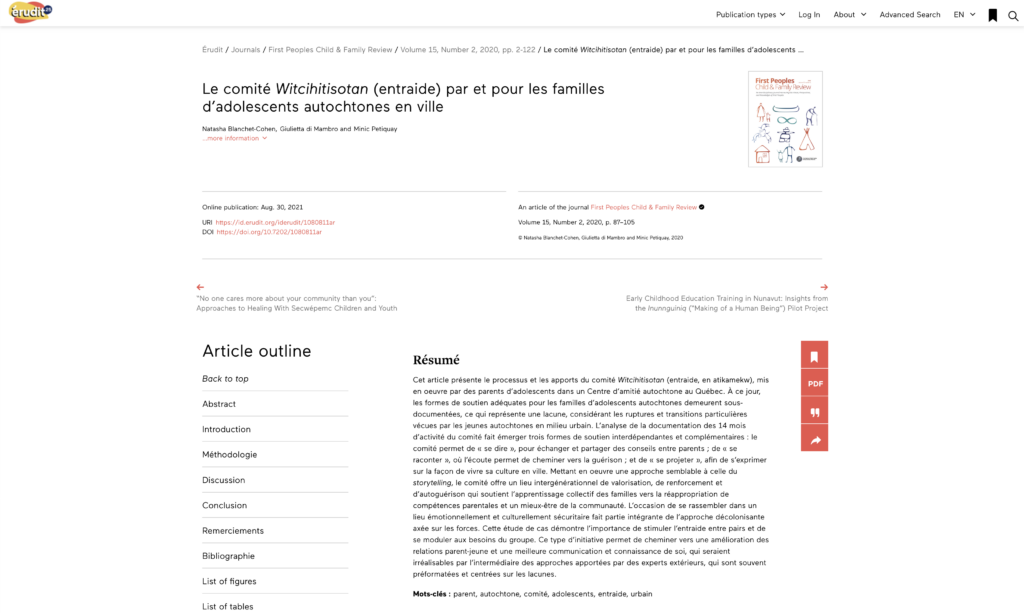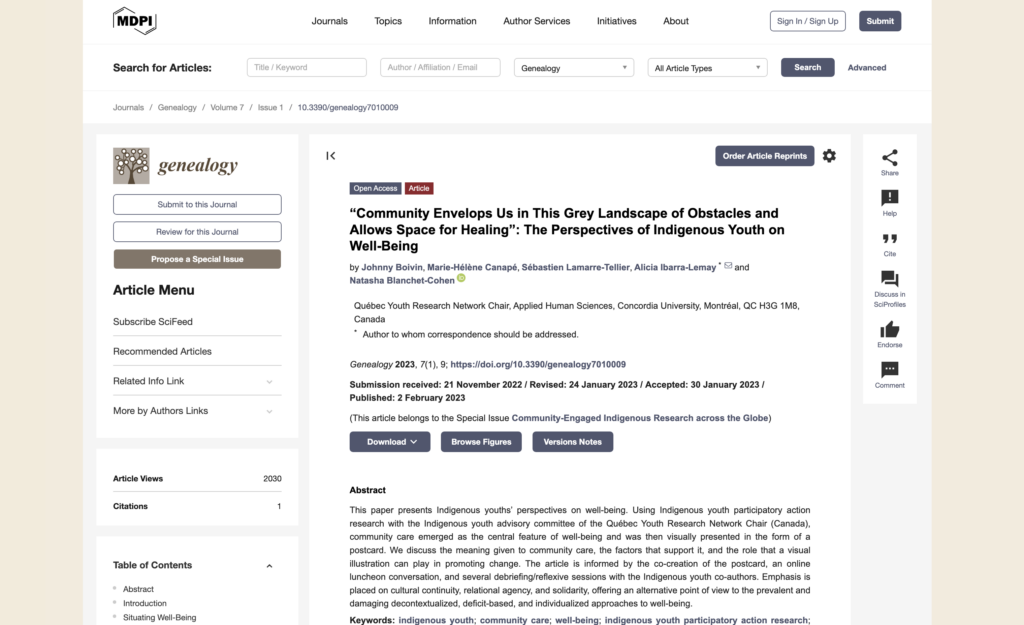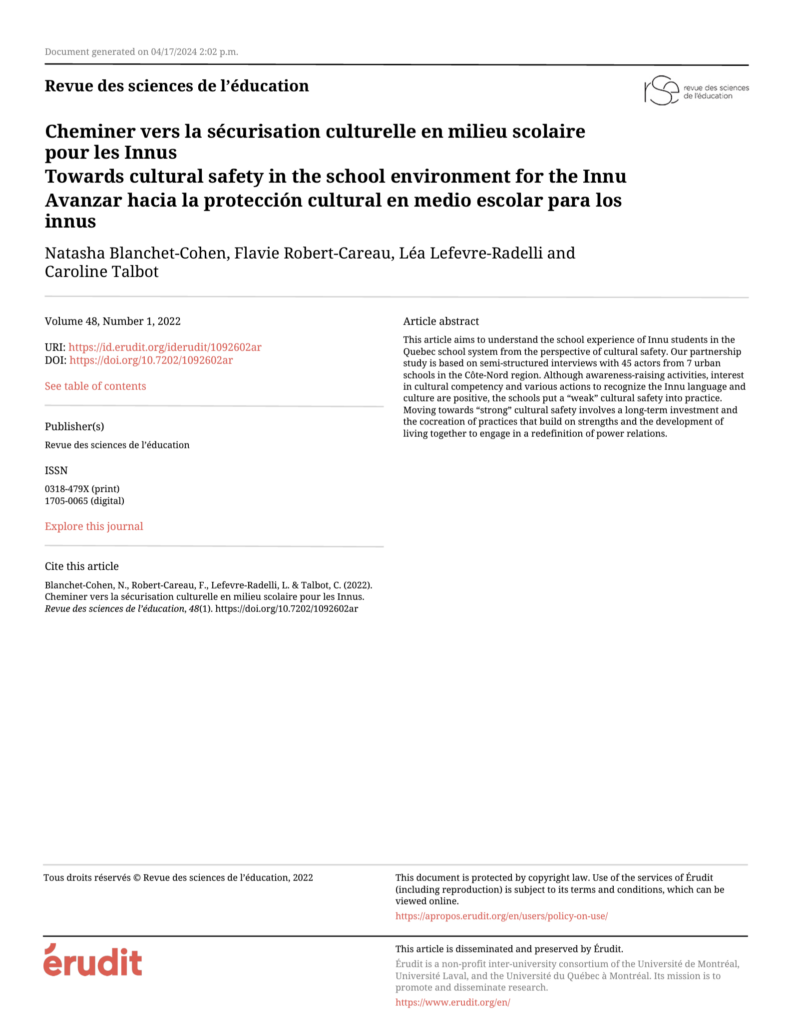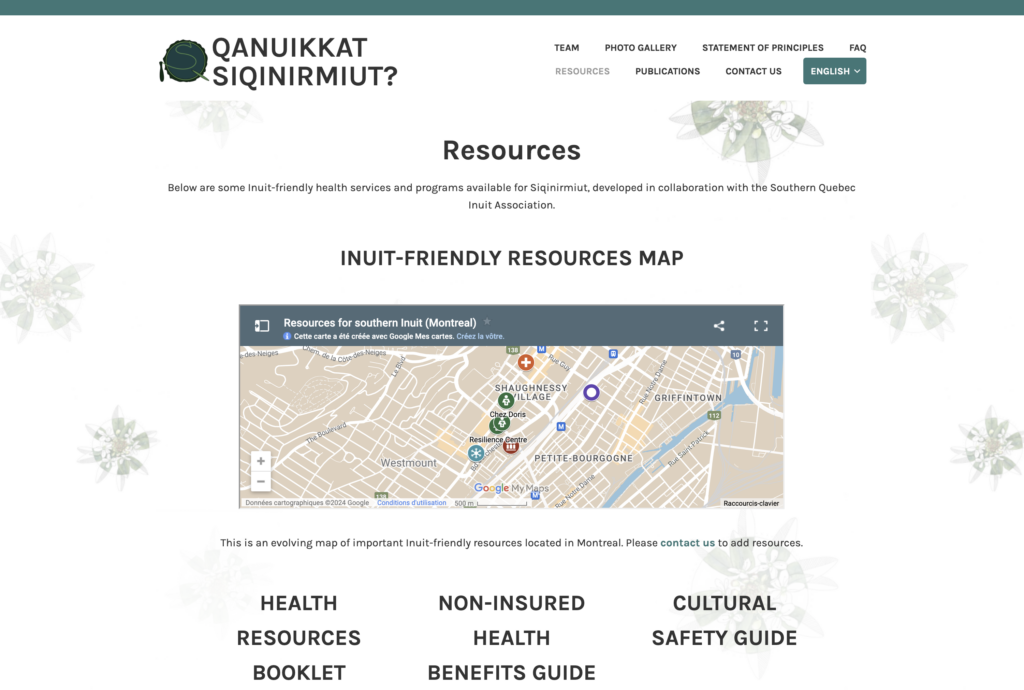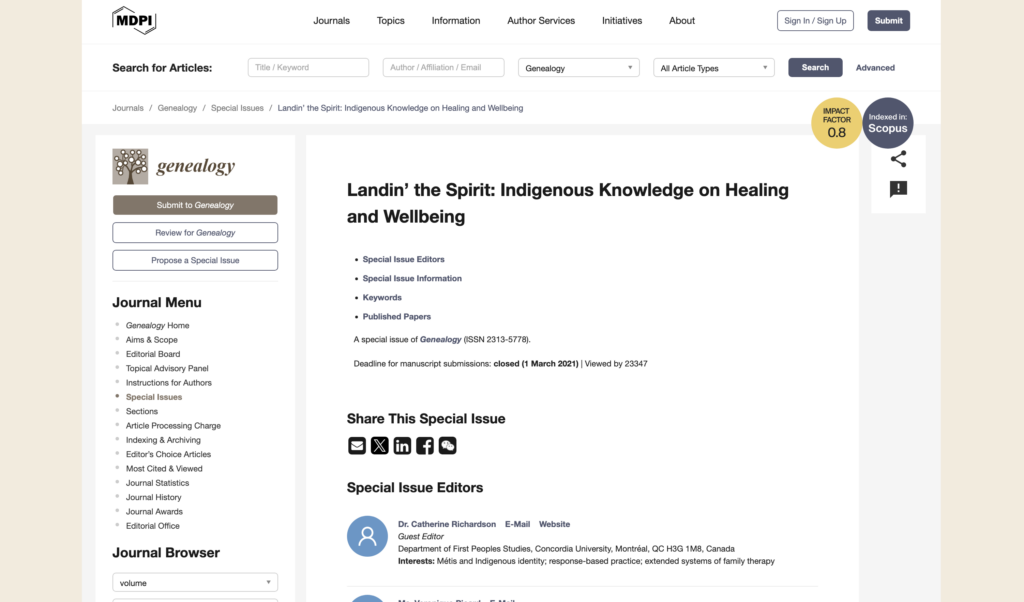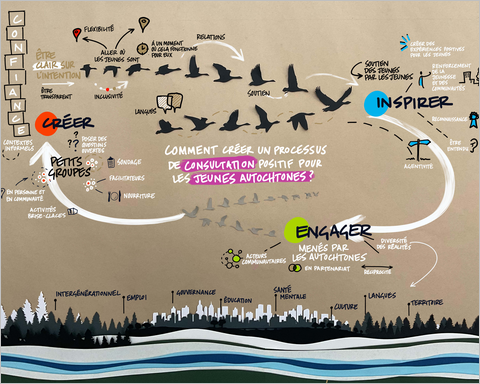Notice bibliographique
Bird, M., Datta, G. D., van Hulst, A., Cloutier, M.-S., Henderson, M. et Barnett, T. A. (2016). A park typology in the QUALITY cohort: Implications for physical activity and truncal fat among youth at risk of obesity. Preventive Medicine, 90, 133-138.
Résumé
Background. The operationalization of opportunities for physical activity (PA) in parks has not been studied extensively.
Objectives. To explore associations between park types, PA and adiposity in youth.
Methods. Data were from an ongoing cohort study in children at risk of obesity. Data were collected in 512 participants (2005–2008). Analyses were restricted to 380 participants living within ≥1000 m of ≥1 park (n parks=576). Park typeswere identified using principal component and cluster analyses. Linear and logistic re-
gressionswere used to explore associations between park types, and PA and adiposity. The reference category was children living near smaller-sized parkswith no team PA features.
Results. Nine park types were identified. Compared to the reference group, children living near esthetically pleasing parks with few team sports installations reported more 15-minute bouts of PA/week (bouts of PA) (β=5.2 [90% CI: 2.3; 8.1]) and variety of PA (1.6 [0.1; 3.1]), and had less % truncal fat (−3.4 [−6.4;−0.5]). Children living near parks that were lowon safety items with cycling infrastructure reported more bouts of PA (2.2 [0; 4.3]) and variety of PA (0; 2.2]). Children living near parks with a variety of PA installations reported more bouts of PA (2.5 [0.2; 4.7]) and variety of PA (1.4 [0.2; 2.5]). Children living near parks that had team sports and pool features reported more bouts of PA (2.5 [0.4; 4.7]).No significant associationswere found for objectively-measured PA.
Conclusion. Parks that emphasize unstructured activities may increase self-reported PA and be associated with less % truncal fat among youth at risk of obesity.
Hyperlien
http://www.sciencedirect.com/science/article/pii/S0091743516301670Appartenance aux volets












